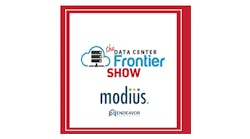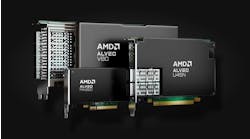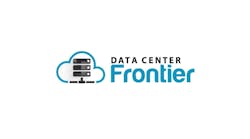How Liquid Cooling Will Help Telcos Meet Net Zero Objectives
As more data migrates to the Edge, the role of data centers is changing. Telco providers find themselves in a race toward Net Zero, encountering novel challenges that demand innovative solutions. Technologies such as IoT and 5G necessitate ultra-low latency and high scalability to process vast amounts of data close to its source, often in remote locations. Addressing power constraints, streamlining serviceability, and significantly reducing maintenance costs have emerged as top priorities for meeting Net Zero objectives. Liquid cooling has emerged as a pivotal solution poised to assist telco operators in meeting these multifaceted challenges.
Challenges at a Glance
Telco operators grapple with three fundamental challenges: power constraints, increased density, and escalating costs. The finite power available in the grid poses a significant hurdle, particularly in urban areas and at the extreme edge where diverting power from essential activities raises concerns. The insatiable demand for data processing, computational power, and GPUs exacerbates power consumption, necessitating innovative solutions to mitigate this critical bottleneck.
Another challenge arises from the dual mandate of expanding the number of towers while enhancing the capacity of each tower. This dual objective strains both power budgets and computational capabilities, demanding a strategic approach to maximize the value of each location. Finally, the amalgamation of heightened density, increased service costs per site, and a surge in operational expenses (OPEX) due to service and maintenance needs contribute to rising costs, particularly at the extreme edge. The logistics and expenses associated with servicing remote sites elevate OPEX, a pressing concern for telco operators.
Liquid Cooling: A Strategic Solution
Amid these challenges, liquid cooling has emerged as a promising solution. Cooling, a vital facet of data center operations, consumes approximately 40% of total data center electricity. Liquid cooling is rapidly becoming the solution of choice to efficiently and cost-effectively accommodate today’s compute requirements. However, not all liquid cooling solutions are the same.
Direct-to-chip cooling, while providing high cooling performance at chip levels, introduces inefficiencies at the system level as it still requires air cooling. While a viable interim solution, direct-to-chip falls short of addressing longer-term goals such as sustainability, serviceability, and scalability. On the other hand, tank immersion offers sustainability at the system level but demands a complete redesign of data center structures, conflicting with long-term density, scalability, and serviceability goals. Moreover, both solutions eliminate brownfield data center space as an option and as they necessitate special training for equipment servicing.
Solutions like Precision Liquid Cooling combine the best of both technologies by removing nearly 100% of the heat generated by the electronic components of a server and reducing energy use by up to 40% and water consumption by up to 100%. They do this by using a small amount of dielectric coolant to precisely target and remove heat from the hottest components of the server, ensuring maximum efficiency and reliability. This eliminates the need for traditional air-cooling systems and allows for greater flexibility in designing IT solutions. There are no hotspots to slow down performance, no wasted physical space on unnecessary cooling infrastructure, and minimal need for water consumption.
This type of technology also reduces stress on chassis components, reducing component failures by 30% and extending server lifecycles. Servers can be hot swapped at both the data center and at remote locations. Service calls are simplified and eliminate exposure to environmental elements on-site, de-risking service operations.
Operating within standard rack-based chassis, solutions like Precision Liquid Cooling are also highly scalable. Telco operators can effortlessly expand their compute capacity from a single node to a full rack, adapting to evolving needs.
Embracing a Transformative Future
The telecommunications industry stands at the brink of transformation, but telco operators are grappling with the challenges of power constraints, increased density, and rising costs, particularly at the extreme edge. Technologies like Precision Liquid Cooling are a sustainable solution to these challenges. As the telecommunications landscape continues to evolve, embracing innovative cooling solutions becomes a strategic imperative for slashing energy and maintenance costs while advancing toward sustainability goals.

Nathan Blom
Nathan Blom is the Chief Commercial Officer of Iceotope Technologies where he is responsible for managing external partnerships, go-to-market strategy, revenue management and product positioning. Iceotope is reimagining data center cooling from the cloud to the edge. Using industry standard form factors, Iceotope’s Precision Liquid Cooling solutions offer extreme cooling performance, simplified maintenance, and significant cost reductions.






